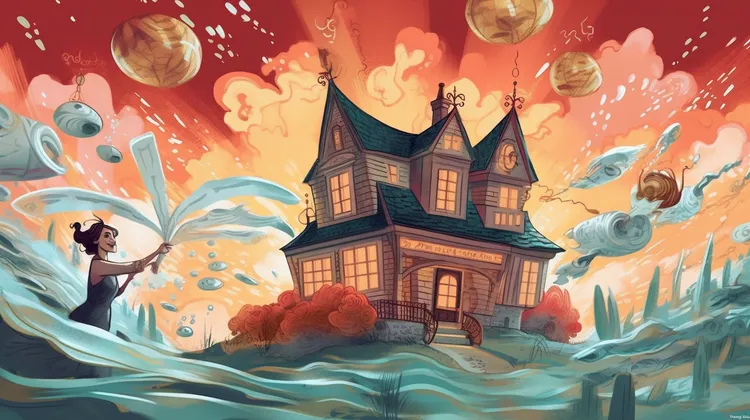
Understanding NFT Royalties
Non-fungible tokens (NFTs) have revolutionized the world of digital art and collectibles. The ability to authenticate ownership of digital creations has been a game-changer, but it’s not just the initial sale that’s making waves. NFT royalties are becoming a more significant aspect of the market, offering artists a way to continue earning income even after they’ve sold their creations. In this article, we’ll take a closer look at what NFT royalties are and how they work.
First, let’s quickly define NFTs. NFTs are unique digital assets that exist on a blockchain, making them transparent, traceable, and verifiable. Unlike Bitcoin or other cryptocurrencies that are fungible (meaning one unit is identical to another), NFTs are non-fungible (meaning each has its own unique value). NFTs are used to represent items such as artwork, music, video game items, and even tweets.
A royalty is a percentage paid to the original creator every time their work is sold or used. In the traditional art world, artists often sell their pieces to galleries or collectors, and they don’t receive any money if the artwork is resold later for a higher price. Royalties are a way to ensure artists are compensated for their work over time.
NFT royalties work similarly. An artist can set a percentage of the sale price they’d like to receive every time their NFT is sold after its initial purchase. This percentage can range from as low as 2.5% to as high as 30%, with 10% being a common rate. This royalty is written into the blockchain code, meaning it’s automatically deducted from the sale price every time the NFT is resold.
One of the benefits of NFT royalties is that they create a passive income stream for artists. They can continue to earn money from their work even as it changes hands multiple times over the years. Additionally, this incentivizes artists to create high-quality work that will hold its value over time.
Another benefit of NFT royalties is that they can help to create a more equitable art market. Historically, artists have been at the mercy of galleries, collectors, and auction houses when it comes to the value of their work. By creating a direct relationship between the artist and the buyer, NFTs and royalties help to cut out the middleman and ensure that the artist is receiving a fair share of the profits.
The ability to earn royalties from NFT sales can also offer an important financial safety net for artists. In the traditional art world, many artists rely on day jobs or other sources of income to support themselves until they’ve made a name for themselves. NFT royalties can help to provide a consistent income source, even if an artist’s work isn’t selling for high prices yet.
There are some considerations to keep in mind when it comes to NFT royalties. One is that they can be difficult to enforce. While the code is written into the blockchain, there’s no guarantee that buyers will follow through on paying the royalty after a sale. Additionally, there’s the question of whether NFTs will hold their value over time. Many of the NFT sales that have made headlines in recent months have been for astronomical sums, but there’s no guarantee that this level of interest will continue.
Another consideration is that NFT royalties can be complex to navigate legally. Intellectual property laws vary by country, making it challenging to create a universal system for NFT royalties. Additionally, there’s the question of how copyright law will interact with NFT royalties – if an artist has sold a work as an NFT but retains the copyright, can they prevent others from creating derivative works without paying a royalty?
Despite these challenges, NFT royalties are becoming an increasingly important part of the NFT market. As the technology develops, it’s likely that platforms will emerge that make it easier to set up and enforce royalty payments. Additionally, as more artists start to see the potential for passive income streams, it’s possible that we’ll see more collaboration and discussion around how to create a fair and sustainable NFT market.
Overall, NFT royalties offer an exciting new way for artists to earn income from their work. By creating a direct relationship between the artist and the buyer, they cut out the traditional gatekeepers of the art world and give artists more control over their creative output. As the NFT market continues to evolve, it will be fascinating to see how royalties develop and what impact they have on the wider art world.
9 thoughts on “Understanding NFT Royalties”
Leave a Reply
You must be logged in to post a comment.
I can’t even comprehend why someone would pay millions of dollars for an NFT when there are so many more pressing issues in the world.
This is just another way for the rich to get richer, it doesn’t benefit new or struggling artists at all.
The fact that artists even have to fight for the right to receive royalties for their work is unacceptable. It’s time for a massive overhaul of the entire art industry.
I hadn’t considered the legal complexities of NFT royalties before, but it’s an important issue to address.
This is fascinating! As an artist, I’ve always struggled with the traditional art market. NFT royalties give me hope for a more equitable future.
This is a brilliant solution to the problem of resale value. NFT royalties ensure that artists continue to be compensated for their work.
NFTs are making it even harder for artists without a large following to make a living and get recognized for their work.
I love the idea of a passive income stream from my digital art. NFT royalties make it possible!
NFT royalties create a direct relationship between artists and buyers, which is a refreshing change from the traditional art market.